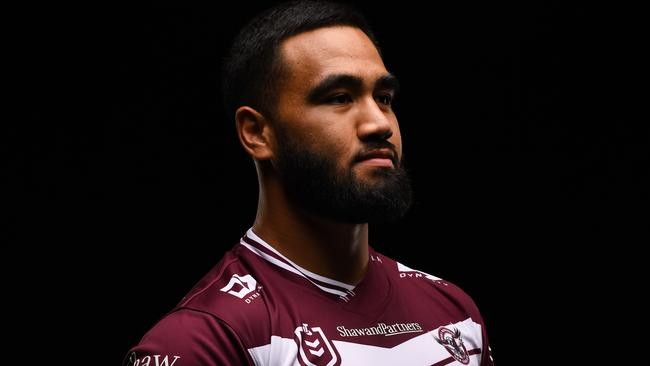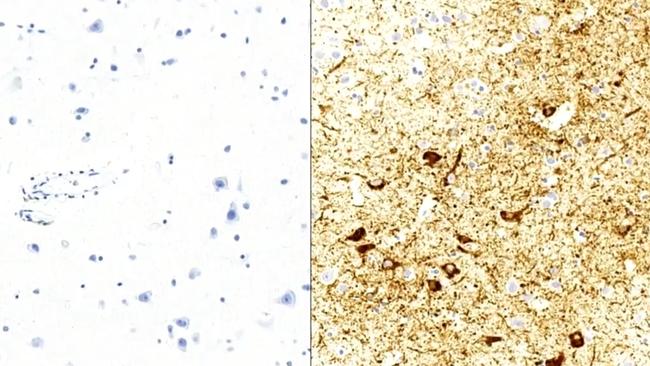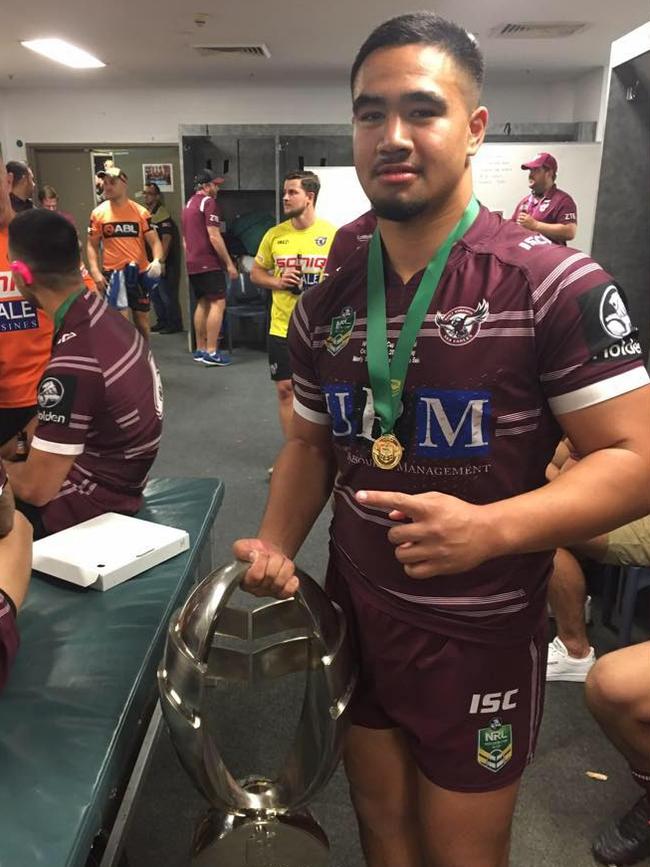‘Wake up call’: Shocking find in NRL rookie Keith Titmuss’ brain
The death of NRL hopeful Keith Titmuss rocked the Australian sport but almost four years on, a terrifying twist has been revealed.

The death of Manly Sea Eagles rookie Keith Titmuss in 2020 has taken a terrifying turn after it was revealed he had evidence of stage two CTE.
Chronic traumatic encephalopathy (CTE) is a degenerative brain disorder which develops due to repeated head impacts. The disease can only be diagnosed after death.
Watch the best coverage of the 2024 NRL finals, with expert analysis and every game until the Grand Final LIVE with no ad-breaks during play, on Kayo. New to Kayo? Start your free trial today >
The death of 20-year-old Titmuss during pre-season training for the Manly Sea Eagles in late 2020 shocked the rugby league world.
Titmuss lost consciousness after during an over two hour training session suffering heat stroke and ultimately suffering cardiac arrest after being rushed to hospital.
A coronial inquest earlier this year found the training session was “more likely than not inappropriate” for the young forward.
But Titmuss’ brain has been studied by Dr Michael Buckland at the Australian Sports Brain Bank, revealing to The Weekend Australian that Titmuss, who is the youngest Australian athlete to be diagnosed with the condition, has signs of stage two CTE.

Stage two CTE can present with mild headaches and difficulty in concentration, as well as depression, short term memory loss and explosive mood swings.
Dr Buckland told The Australian the findings should be a “wake-up call” for parents and should lead to sporting organisations improving their concussion protocols and reducing contact in training.
Titmuss played football from the age of five and also played schoolboys rugby union at Newington College in Sydney, but he hadn’t yet pulled on an NRL jersey.
“Keith’s brain is showing us that, at least in some cases, CTE actually starts during a person’s playing career and starts very young,” Dr Buckland said.
“I wasn’t really expecting to see CTE because of his age.
“What this finding tells us is that it doesn’t matter how good your concussion management is, or if you don’t even get a concussion, it’s that large exposure to repeated impacts, many of which will be non-concussive, are still doing subtle damage to the brain that causes CTE.”
Speaking on Channel 9 News, Dr Buckland said: “Keith grew up playing under so called modern concussion protocols.
“He had the best of care at home, the best of care at school, and none of that was enough to protect him from this disease.”


Titmuss’ parents also told The Australian that they couldn’t recall a time their son had been “majorly concussed” but did reveal they had seen him cop “many blows to the head and head jerk movements throughout his footy career”.
Titmuss’ family revealed in the report that Keith hadn’t shown any “red flags” for CTE.
“Keithy’s personality, nature, and behaviour never changed,” the family said. “He was witty and a deep thinker. His siblings disliked bantering with him because his responses were funny and irrefutably true”.
Dr Buckland said Titmuss appeared to have been in a pre-symptomatic stage of the illness, and that there was no way to know when symptoms would present.
But he added it showed young people were clearly at risk of CTE, even if they didn’t make it to the highest levels.
The Australian Sports Brain Bank has found CTE in 48 of the 99 brains of sportspeople donated since 2018 with at least 16 coming from athletes who didn’t play professionally.
While CTE can only be conclusively diagnosed after death through brain slice analysis, some players have presumtively diagnosed for the condition while alive if symptoms, a physical and neurological exam as well as reviewing a history of head injuries and certain lab and imaging tests.
Rugby league great Mark Carroll spoke earlier this week on his health battle with CTE and anxiety because of the symptoms from the degenerative brain disease.
“I just wanted to explain why I sound like this,” he said on a video posted to Instagram.
“I wish it was from getting hit in the throat like my great mate Geoff Toovey or Gary Larson. Unfortunately it’s the symptoms of CTE.
“I’ve got anxiety. Why? I’ve got no idea. But I’m so tight right through the body and that’s why I’ve got this bloody throat (issue).
“To the people who have texted me after hearing me on radio and on Fox, I’m doing my best to be the best.”
His condition is all-too-regular in rugby league with the likes of Steve Mortimer, Mario Fenech and Wally Lewis also showing symptoms of CTE.
Carroll last year underwent a PET scan which showed signs of the disease.
Read the full story at The Australian.
Originally published as ‘Wake up call’: Shocking find in NRL rookie Keith Titmuss’ brain





